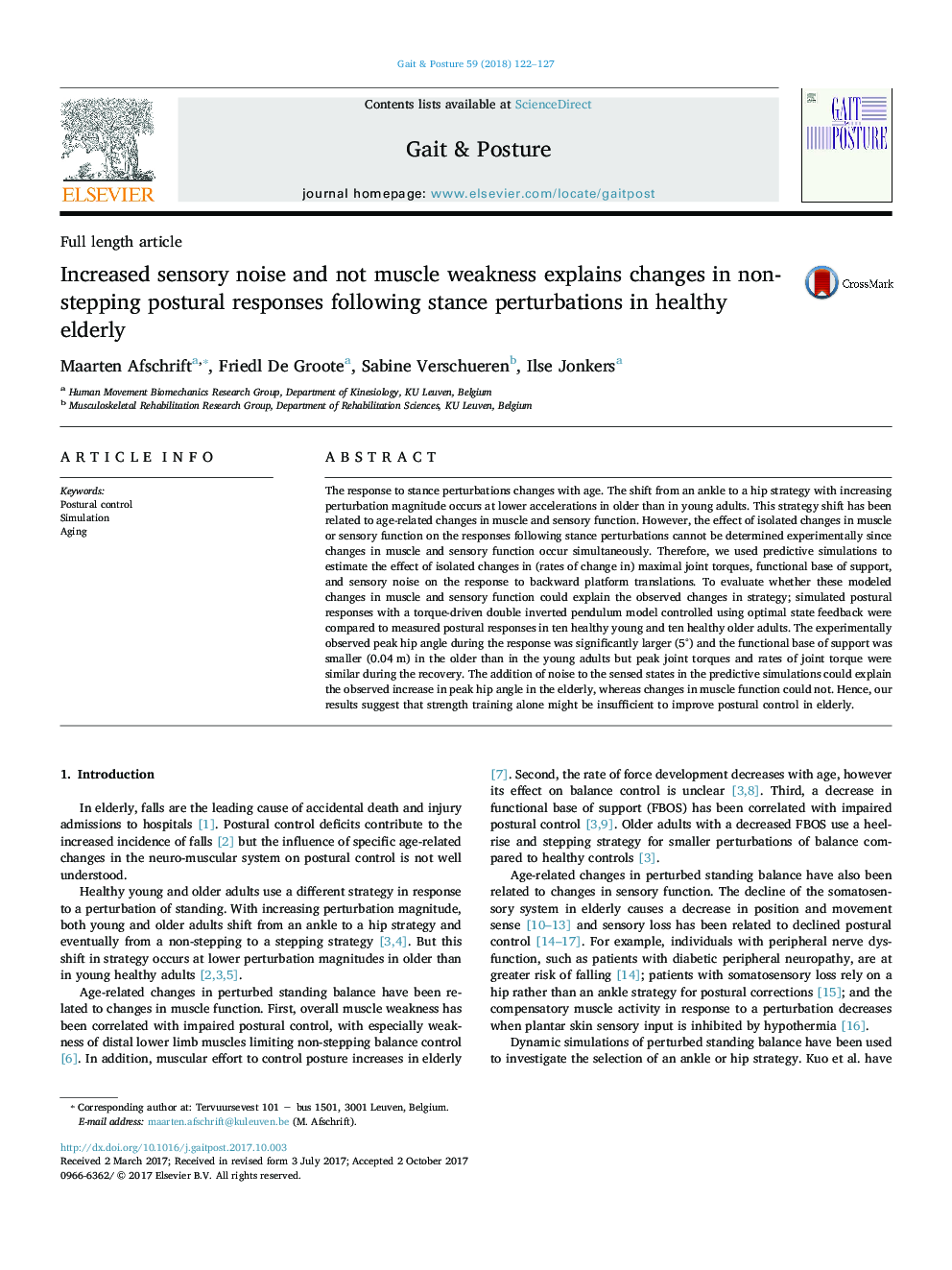| کد مقاله | کد نشریه | سال انتشار | مقاله انگلیسی | نسخه تمام متن |
|---|---|---|---|---|
| 5707469 | 1603836 | 2018 | 6 صفحه PDF | دانلود رایگان |
عنوان انگلیسی مقاله ISI
Increased sensory noise and not muscle weakness explains changes in non-stepping postural responses following stance perturbations in healthy elderly
ترجمه فارسی عنوان
افزایش سر و صدای حسی و ضعف عضلانی، تغییرات در پاسخهای غیرواقعی موضعی پس از اختلالات موضعی در سالمندان سالم را توضیح می دهد
دانلود مقاله + سفارش ترجمه
دانلود مقاله ISI انگلیسی
رایگان برای ایرانیان
کلمات کلیدی
کنترل پستی شبیه سازی، سالخورده،
موضوعات مرتبط
علوم پزشکی و سلامت
پزشکی و دندانپزشکی
ارتوپدی، پزشکی ورزشی و توانبخشی
چکیده انگلیسی
The response to stance perturbations changes with age. The shift from an ankle to a hip strategy with increasing perturbation magnitude occurs at lower accelerations in older than in young adults. This strategy shift has been related to age-related changes in muscle and sensory function. However, the effect of isolated changes in muscle or sensory function on the responses following stance perturbations cannot be determined experimentally since changes in muscle and sensory function occur simultaneously. Therefore, we used predictive simulations to estimate the effect of isolated changes in (rates of change in) maximal joint torques, functional base of support, and sensory noise on the response to backward platform translations. To evaluate whether these modeled changes in muscle and sensory function could explain the observed changes in strategy; simulated postural responses with a torque-driven double inverted pendulum model controlled using optimal state feedback were compared to measured postural responses in ten healthy young and ten healthy older adults. The experimentally observed peak hip angle during the response was significantly larger (5°) and the functional base of support was smaller (0.04 m) in the older than in the young adults but peak joint torques and rates of joint torque were similar during the recovery. The addition of noise to the sensed states in the predictive simulations could explain the observed increase in peak hip angle in the elderly, whereas changes in muscle function could not. Hence, our results suggest that strength training alone might be insufficient to improve postural control in elderly.
ناشر
Database: Elsevier - ScienceDirect (ساینس دایرکت)
Journal: Gait & Posture - Volume 59, January 2018, Pages 122-127
Journal: Gait & Posture - Volume 59, January 2018, Pages 122-127
نویسندگان
Maarten Afschrift, Friedl De Groote, Sabine Verschueren, Ilse Jonkers,
